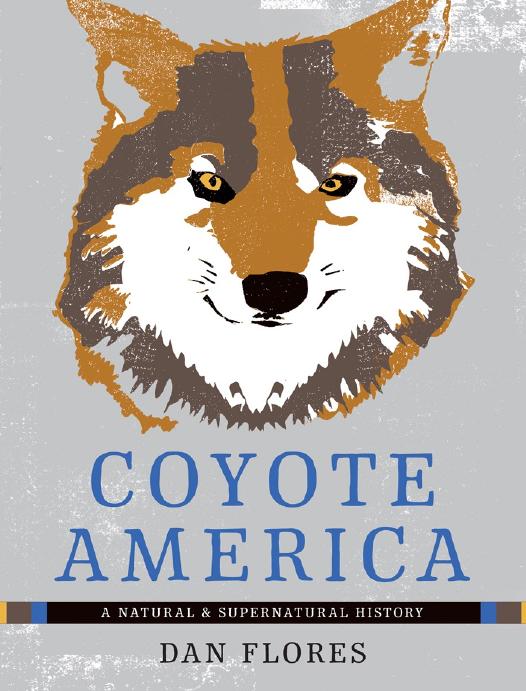Coyote America by Dan Flores

Author:Dan Flores
Language: eng
Format: mobi, epub, pdf
ISBN: 9780465098538
Publisher: Basic Books
Published: 2016-04-30T07:00:00+00:00
If anyone in the scientific community doubted Major E. A. Goldman’s sincerity about the coyote being the “archpredator” of 1930s America, the Animal Damage Control Act of 1931 disabused him or her of any illusion that the bureau would renounce extermination. The act originated in 1928 in a Texas congressman’s plan to wipe out coyotes once and for all. Once proposed the idea gained momentum and precision: Congress would appropriate $1 million a year for ten years “to promulgate the best methods of eradicat[ing], suppress[ing], or bringing under control” primarily coyotes but also a suite of other “varmints” the United States regarded as unworthy wild citizens of the republic.
Almost 150 scientists from some of the most distinguished universities and research facilities in the country at once signed a petition protesting the Animal Damage Control Bill, arguing among other things that wholesale attempts to eradicate coyotes would produce enormous collateral damage among innocent animals. Even the bureau’s now elderly founder, C. Hart Merriam, came out publicly against doubled-down poisoning. But extermination advocate Scott Leavitt of Montana agreed to serve as the chief sponsor of the bill in Congress, and Edward Taylor of Colorado—soon to become famous as the architect of the Taylor Grazing Act, which ended homesteading in the United States—was his wingman in the effort to “clean out this scourge.”
Despite a heroic battle waged by the mammalogists in testimony, newspapers, and magazines like Outdoor Life, Congress passed the bill, and President Herbert Hoover signed the Animal Damage Control Act into law on March 2, 1931. In its claimed goals of protecting livestock, saving valuable game animals, and suppressing diseases like rabies, the act specifically designated the “national forests and other areas of the public domain,” along with state lands and private holdings, as staging grounds for the eradication or “control” of predators. Notably, the bill did not mention the national parks. Indeed, Joseph Grinnell’s proposal that predators remain unmolested in the parks would become the single victory the scientists realized from taking on the bureau’s policy of extermination. And even that concession would wait until 1935.
As Major Goldman had promised the year before, this time the bureau pinned the species-cleansing bull’s-eye directly on America’s junior wolf. Gray wolves were gone; Mexican, red, and eastern wolves had dwindled to a few straggling, shadowy remnants. Now, with $1 million a year to spend on the prospect, the bureau deemed it señor coyote’s turn for shock and awe.
But it turned out that the bureau still faced hurdles. Goldman’s reference during the 1930 panel in New York to “additional studies” pointed directly at the work of two mammal ecologists who would become legendary figures in twentieth-century American conservation. At the time, however, they were, in effect, working for the man, with the stated goal of buttressing the case against the scientific critics who were fighting the bureau’s predator policies. The Minnesota brothers, Olaus and Adolph Murie, were born ten years apart in the late 1800s. Both had taken advanced degrees in the new field
Download
Coyote America by Dan Flores.epub
Coyote America by Dan Flores.pdf
This site does not store any files on its server. We only index and link to content provided by other sites. Please contact the content providers to delete copyright contents if any and email us, we'll remove relevant links or contents immediately.
Sapiens: A Brief History of Humankind by Yuval Noah Harari(14311)
The Tidewater Tales by John Barth(12625)
Mastermind: How to Think Like Sherlock Holmes by Maria Konnikova(7274)
Do No Harm Stories of Life, Death and Brain Surgery by Henry Marsh(6904)
The Thirst by Nesbo Jo(6877)
Why We Sleep: Unlocking the Power of Sleep and Dreams by Matthew Walker(6651)
Life 3.0: Being Human in the Age of Artificial Intelligence by Tegmark Max(5506)
Sapiens by Yuval Noah Harari(5321)
The Longevity Diet by Valter Longo(5039)
The Body: A Guide for Occupants by Bill Bryson(5026)
The Rules Do Not Apply by Ariel Levy(4907)
The Immortal Life of Henrietta Lacks by Rebecca Skloot(4547)
Animal Frequency by Melissa Alvarez(4424)
Why We Sleep by Matthew Walker(4394)
The Hacking of the American Mind by Robert H. Lustig(4336)
Yoga Anatomy by Kaminoff Leslie(4331)
All Creatures Great and Small by James Herriot(4267)
Double Down (Diary of a Wimpy Kid Book 11) by Jeff Kinney(4239)
Embedded Programming with Modern C++ Cookbook by Igor Viarheichyk(4137)
